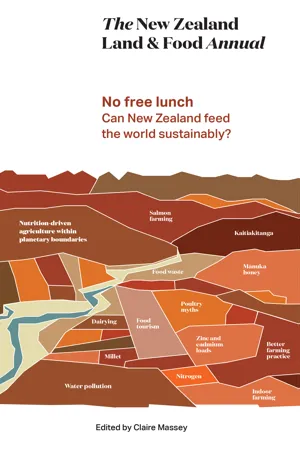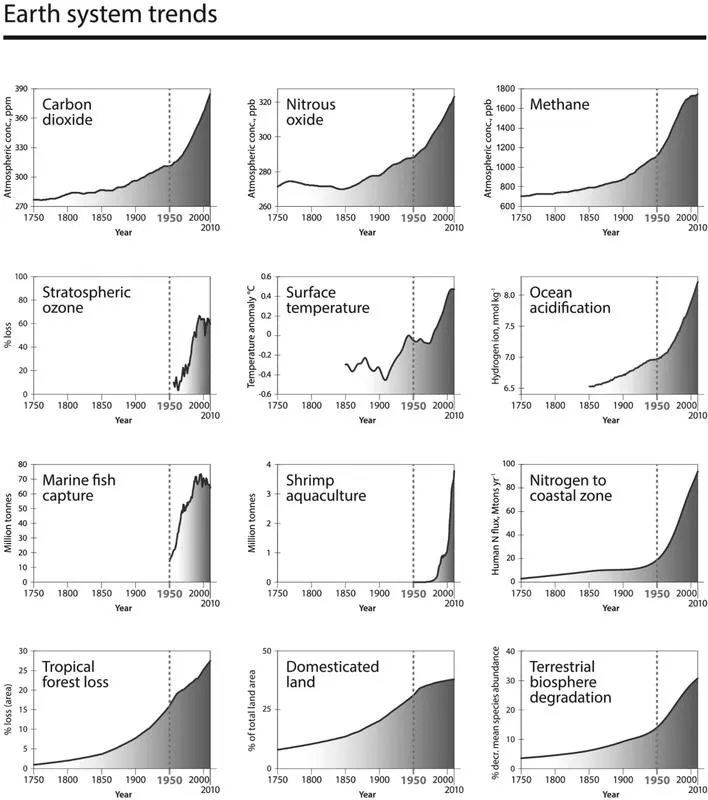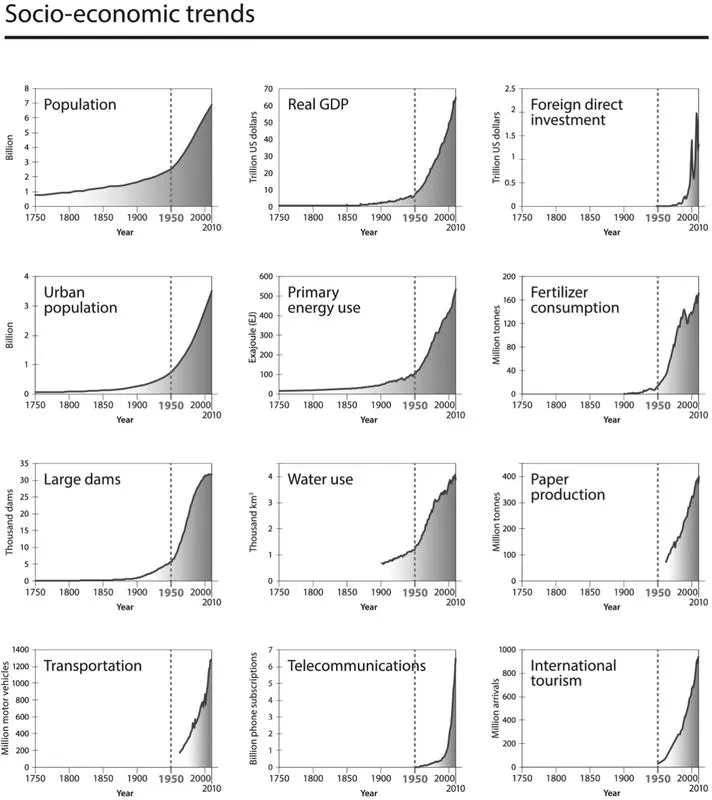
- 288 pages
- English
- ePUB (mobile friendly)
- Available on iOS & Android
eBook - ePub
About this book
The world needs nutrition-driven agriculture that operates within planetary boundaries. But a recent OECD report on New Zealand's environmental performance shows how our agricultural sector's continual push at those boundaries poses grave risks.
Meantime, a range of health indices show that how and what we eat makes many of us ill. Plus, valuable revenue and jobs are lost because we don't champion the great food we do produce. The agriculture, health, tourism and environment sectors can engage to pull us back inside those boundaries. Robust policies, new solutions and best practice for sustainable food production and consumption are needed.
Thirty-one experts give their views on how New Zealand can lead the way.
Frequently asked questions
Yes, you can cancel anytime from the Subscription tab in your account settings on the Perlego website. Your subscription will stay active until the end of your current billing period. Learn how to cancel your subscription.
At the moment all of our mobile-responsive ePub books are available to download via the app. Most of our PDFs are also available to download and we're working on making the final remaining ones downloadable now. Learn more here.
Perlego offers two plans: Essential and Complete
- Essential is ideal for learners and professionals who enjoy exploring a wide range of subjects. Access the Essential Library with 800,000+ trusted titles and best-sellers across business, personal growth, and the humanities. Includes unlimited reading time and Standard Read Aloud voice.
- Complete: Perfect for advanced learners and researchers needing full, unrestricted access. Unlock 1.4M+ books across hundreds of subjects, including academic and specialized titles. The Complete Plan also includes advanced features like Premium Read Aloud and Research Assistant.
We are an online textbook subscription service, where you can get access to an entire online library for less than the price of a single book per month. With over 1 million books across 1000+ topics, we’ve got you covered! Learn more here.
Look out for the read-aloud symbol on your next book to see if you can listen to it. The read-aloud tool reads text aloud for you, highlighting the text as it is being read. You can pause it, speed it up and slow it down. Learn more here.
Yes! You can use the Perlego app on both iOS or Android devices to read anytime, anywhere — even offline. Perfect for commutes or when you’re on the go.
Please note we cannot support devices running on iOS 13 and Android 7 or earlier. Learn more about using the app.
Please note we cannot support devices running on iOS 13 and Android 7 or earlier. Learn more about using the app.
Yes, you can access The New Zealand Land & Food Annual 2017 by Claire Massey in PDF and/or ePUB format, as well as other popular books in Business & Agribusiness. We have over one million books available in our catalogue for you to explore.
Information
Reducing our carbon foodprint
School of Engineering and Advanced Technology,
Massey University
Massey University
OUR GROWING DEMANDS for food, water, energy and natural resources have created huge stresses on the ‘global commons’ and the entire planet. The international debate on food security has arisen due to concerns about exponential population growth, climate-change impacts, food price volatility, malnutrition, and consumption rates of natural resources. A wide range of socio-economic and Earth system indicators that illustrate global growth parameters from 1750 to 2010 confirm the ‘Great Acceleration’ that has become particularly evident over the past six decades (see Figure 1). Competition for scarce supplies of food, freshwater and natural resources could ultimately result in conflict, exacerbated by the growing concerns about future water quality and scarcity, land degradation, loss of soil fertility, increasing desertification and the costly need to adapt to climate change.
The only indicators appearing to have slowed in recent years are marine fish capture (probably because of a significant decline in commercial fish stocks, with one-third being overfished) and the percentage of total land area used for domesticated agricultural production (probably because most land suitable for pasture or crops is already being farmed, and also the area of degraded land has increased as existing farmland becomes less fertile).

Figure 1. Selected global indicators between 1750 and 2010 for socio-economic development and Earth systems relating to agri-food supply chains and land use.1

Concerns over these trends have led to an analysis of nine ‘planetary life-support systems’. Their capacities to cope by staying within safe boundaries (that is, before human life is threatened) are being compromised.2 The boundaries for climate change, biodiversity loss and bio-geochemical flows of nitrogen and phosphorus already appear to have been exceeded. It is clear that we cannot continue along the current pathway towards ever-increasing economic growth based on exploiting our planet’s limited natural resources.
If we can improve the efficiency of food production and consumption, this will provide the opportunity to reduce future demands on land, water and energy as well as reduce related greenhouse gas (GHG) emissions. Global food supply chains, influenced by powerful multinational companies, are currently unsustainable from the natural resources perspective.3
Around one-third of the world’s total end-use energy demand is needed to bring food to the table, from farm production and harvesting to processing, transport, storage, retailinging and cooking. Around a quarter of annual global GHGs are emitted as a result, including nitrous oxide from fertiliser use and animal urine, and methane from ruminants and paddy fields.4 Food production systems are also responsible for almost two-thirds of terrestrial biodiversity loss, a third of degraded soils, the depletion of two-thirds of commercial fish stocks and over-exploitation of a fifth of the world’s aquifers.
As a result, the UN Food and Agriculture Organization (FAO) has expressed concerns about being able to feed the world’s future population, projected to be around 9.8 billion by 2050. Exacerbated by the increasing protein demand per capita from the rapidly growing middle classes in India, China and elsewhere, over 70 per cent more food will be required by 2050 compared with today.
Our failure to consume around one-third of the food we produce in the world (due to pre-consumption losses post-harvest and in storage, and consumption losses from serving excessive portions, throwing food away at its ‘best before’ date, etc.) does not help the food security problem. Neither does excessive food consumption leading to unhealthy obesity. Over two billion people are thought to be obese, compared with two billion suffering from some level of nutrient deficiency and 800 million hungry, mainly in sub-Saharan Africa and Asia. The good news is that the number that are hungry has declined from around one billion in 1990.
The aim of this chapter is to outline the global complexities of food supply, identify the reasons why the industry is currently unsustainable in the longer term, and present some possible solutions that will enable the world’s population to be well fed in the future. The following sections discuss issues along the agri-food supply chains relating to land use competition, soil nutrients, water use, energy and climate technologies, agri-ecological systems, moving away from animal proteins, and the need for systems thinking to provide solutions.
AROUND 1580 MILLION hectares (Mha) of cropland and 3350 Mha of pastureland, together covering around one-third of the Earth’s total land area, are used to produce food and fibre to meet the needs of the present human population.5 A relatively small area of land is also used to produce biomass for heat, power and transport biofuels. The total land area available for agricultural production has increased by 11 per cent since 1961, mainly as a result of deforestation (with the consequent loss of biodiversity). This land, mainly in South America and South East Asia, has helped to offset the decrease in the area of farmed land in Europe and North America. For example, soybean for cattle feed imported from South America has displaced some arable land in Europe that was used in the past for local fodder crop production.
To satisfy future growth in food demand as well as for biofuels and bio-materials, and to compensate for soil losses from urban development and soil degradation, and allowing for increasingly higher crop yields in the future, it has been estimated that the total area of productive land will need to increase between 320 to 849 Mha (21 to 55 per cent) by 2050.6 However, this is thought by some to be unachievable7 since it would then exceed the total cropland area of 1640 Mha estimated by the International Resource Panel of the UN Environment Programme to be within the ‘safe operating space’.
The work of the UN Convention to Combat Desertification (UNCCD) to maintain soil health through sustainable land management practices could contribute to this required expansion of fertile land area. However, given that a third of total land area is currently classed as highly or moderately degraded, leading to a lower area of good cropping land, and only 10 per cent of degraded land has been improved in recent years,8 there is much work left to do.
Ownership of degraded land can be a constraint to investing in improving it. Often those farming the land are not the owners of it, so capital investment by them is not feasible. However, these farmers have the opportunity to employ management practices that minimise loss of soil nutrients and soil moisture, and for very low capital investment. For example, minimum tillage, composting and precision farming techniques could all help improve productivity, which would help reduce the necessary projected increase in cropland.
MAINTAINING SOIL HEALTH is essential to ensure crop and pasture productivity does not decline. Nitrogen, potassium and phosphorus, plus sulphur and various trace elements, are the major critical inputs for high-yielding crop and pasture production. These nutrients are removed from the land when products are harvested, as well as being lost from run-off to waterways and from evaporation (particularly nitrogen). Most farmers rely heavily on the manufacture and application of mineral fertilisers to replenish nutrients. This can be energy intensive (such as urea manufacture using natural gas) or dependent on natural resource extraction (such as phosphate and potash rock).
Organic growers avoid using mineral fertilisers and rely on composting, animal manure, sewage sludge, etc. as sources of nutrients. Some key nutrients, such as phosphorus, for example, can be recycled from food-processing plant wastes, composting of crop by-products, animal dung, and the effluent/sludge co-product from anaerobic digestion plants that produce biogas from a range of organic waste materials, including animal wastes, sewage sludge and crop residues. Whether in organic or mineral forms, the more efficient and timely application of nutrients through precision farming techniques based on the stages of crop and pasture growth, and the recycling of nutrients, can reduce the losses and wastes and hence the costs. It is more a case of applying plant nutrients more efficiently as part of the future ‘circular economy’ rather than eventually running out of reserves. For example, a recent study tour by the author with the Moroccan phosphate company OCP Group, served to confirm that over 80 billion cubic metres of reserves and resources are available in Morocco and the Western Sahara alone9 and these will last for many decades at current extraction rates.
Over the past five decades, global crop production has tripled due to a doubling of the total area irrigated and a fivefold increase in fertiliser application.10 Pesticide use has also increased significantly, aiming to reduce losses from diseases, insects and other pests. However, the annual rate of increase of crop yields is beginning to slow down and local pollution from the increased use of agrochemicals has become more evident in waterways, aquifers and estuaries, with a concomitant effect on wildlife biodiversity.
AGRICULTURE ACCOUNTS FOR around 70 per cent of total freshwater extraction. The main use is for crop irrigation, so more efficient application techniques to save water (and hence save electricity and/or diesel fuel for powering pumping systems) are imperative. By more precisely applying the water where and when it is needed (for example, based on frequent measurements of soil moisture content), crop yields can also be increased. Israel, Jordan and Morocco have been the leaders in drip-irrigation systems and other water-saving innovations out of necessity under their dry conditions; Australia reduced water demand by 40 per cent between 2001 and 2009 using cost-effective efficiency and demand-reduction measures.11
The challenge is to widely disseminate the relevant knowledge on how to save water so that farmers and food processors can benefit from innovative ideas. Government incentives or regulations can also help in supporting ‘smart irrigation’ schemes. Co...
Table of contents
- Cover
- Title Page
- Contents
- Foreword: No Free Lunch
- Reducing our carbon foodprint
- Mission-critical
- Repositioning human nutrition
- A utopia of food systems
- Kaitiakitanga
- Our phosphorus footprint
- A tale of two metals
- Our deadly nitrogen addiction
- Eating within planetary boundaries
- Can science get us out of here?
- Situations vacant
- Moon shot
- First we must tell our stories
- Putting the culture back into agriculture
- A vision for the ocean
- Mānuka honey drama
- Better farming
- The rise of indoor farming and the demand for innovation
- ‘One Health’ in action
- Dairying — climate villain or hero?
- The truth about chicken meat
- Sustainability issues after harvest
- Millets and the Anthropocene
- Contributors
- Copyright